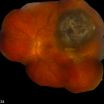Plantar fasciitis? Stretching seems to do the trick
New study compares 2 treatment methods for acute plantar fasciitis
2010-11-05
(Press-News.org) According to a new study from the Journal of Bone and Joint Surgery (JBJS), patients with acute plantar fasciitis who perform manual plantar fasciitis stretching exercises, as opposed to shockwave therapy, had superior results and higher patient satisfaction.
Study details and findings:
A total of 102 patients who had acute plantar fasciitis pain, were randomly assigned to two groups. Acute is defined as any patient that experiences pain for less than six weeks. 54 people performed an eight-week stretching program, while 48 people received repetitive low-energy radial shock-wave therapy once a week for three weeks. Each group was asked to refrain from any other forms of physical therapy.
Patients in the stretching group, were told to perform stretching exercises three times a day, for eight weeks. All patients were contacted by phone every two weeks to check on training compliance. After four weeks, the patients were told to slowly return to their previous sport and/or recreational activity. Patients in group two received three sessions of radial shock-wave therapy, three times a week.
Patients were given follow-up evaluations at two, four and fifteen months. At both the two and fourth month evaluation, 65 percent of patients who performed the plantar fascia-specific stretch reported total satisfaction with treatment or satisfaction with treatment with minor reservations. Only 29 percent did so after shockwave therapy.
John Furia, MD, an orthopaedic surgeon in Pennsylvania and one of the study authors added that those who develop plantar fascia pain should begin non-operative treatment promptly. "The earlier you understand how stretching fits in, and the earlier you learn how frequently to perform the simple plantar stretch, the less likely you will require a more invasive treatment method," stated Dr. Furia. "Shockwave therapy has been shown to be a very effective treatment for patients with chronic plantar fasciitis (pain for more than six to eight weeks), however acute cases are probably best treated with more simple measures," he added.
How to do the stretch:
According to the American Academy of Orthopaedic Surgeons (AAOS), this stretch should be performed in the seated position. Cross your affected foot over the knee of your other leg. Grasp the toes of your painful foot and bring your ankle up and your toes up. Place your thumb along the plantar fascia and rub it to stretch it. The fascia should feel like a tight band along the bottom of your foot when stretched. Hold the stretch for 10 seconds. Repeat it 10-20 times for each foot.
Dr. Furia and Dr. Judy Baumhauer, orthopaedic surgeon and president-elect of the American Orthopaedic Foot and Ankle Society (AOFAS) recommend that this exercise be performed initially in the morning, before getting out of bed and after any long periods of sitting. If there is a sharp pain in your heel when getting up, a stretch should have been done before standing or walking. Dr. Baumhauer gives her patients a visual as a reference for this exercise.
Dr. Baumhauer, who was not involved in this study, has been counseling patients on the plantar fascia stretch for 15 years. "I am a firm believer in this type of stretch and nearly 80 percent of my patients have shown improvement in just eight weeks of stretching therapy."
INFORMATION:
Relevant statistics:
Plantar fasciitis is the most common cause of pain on the bottom of the heel, and approximately two million patients are treated for plantar fasciitis each year.
More than 80 percent of patients with plantar fasciitis will improve within 10 months of starting simple treatment methods.
Dr. Furia suggests that approximately 20 percent of patients with plantar fasciitis develop a chronic condition.
Disclosure: Both Dr. Furia and Dr. Baumhauer have nothing related to this study to disclose.
ELSE PRESS RELEASES FROM THIS DATE:
2010-11-05
Vomiting is unpleasant. Nearly 30% of all patients suffer from nausea and vomiting after surgery. The financial repercussions of this are longer patient stays in the recovery room, with increased need for personnel. Appropriate prophylaxis and treatment can prevent postoperative nausea and vomiting. In a systematic review of the literature, Dirk Rüsch and co-authors investigate how treatment recommendations for nausea after general anesthesia can be improved (Dtsch Arztebl Int 2010; 107[42]: 733 741).
The pathogenesis of postoperative nausea remains unclear, but it has ...
2010-11-05
New York University researchers have developed a method to shape solid materials using a corn starch solution. The process, devised by researchers in NYU's Courant Institute of Mathematical Sciences and Department of Physics, offers a potential technique for material cutting and manufacturing processes.
Their work is described in the journal Physical Review Letters.
Manufacturers use a variety of methods for shaping solid materials, ranging from laser cutting to high-speed jets of water. While altering the shape of such materials, such as glass, metal, or stone, is ...
2010-11-05
BATON ROUGE – Genetic diseases impact millions around the world each and every day. Complex medical conditions with genetic predispositions, such as hypertension, can also weigh heavily on our lives. Susceptibility to hypertension has many genetic components and often goes undiagnosed until a person has signs of advanced disease.
Many imagine a day when science will give us the tools to discover how to work with these genetic issues and discover ways to not only diagnose, but to use them to our advantage as individuals. LSU Boyd Professor Mark Batzer and an international ...
2010-11-05
NASA's infrared satellite imagery has confirmed that Tomas is intensifying as convection is strengthening and cloud tops within the system are getting colder.
Infrared imagery helps scientists detect cold top temperatures within a tropical cyclone, and Tomas' cloud tops have grown colder over the last 24 hours. Tomas showed strong convective activity in his center as indicated by high thunderstorms that were as cold as -63 degrees Fahrenheit. The colder the cloud tops, the higher and stronger the thunderstorms are that power the tropical cyclone. The infrared imagery ...
2010-11-05
When it comes to public issues pertaining to science and technology, "talking it out" doesn't seem to work. A new study from North Carolina State University shows that the more people discuss the risks and benefits associated with scientific endeavors, the more entrenched they become in their viewpoint – and the less likely they are to see the merit of other viewpoints.
"This research highlights the difficulty facing state and federal policy leaders when it comes to high-profile science and technology issues, such as stem cell research or global warming," says Dr. Andrew ...
2010-11-05
A common roadside plant could have the right stuff to become a new source of biofuel, according to U.S. Department of Agriculture (USDA) studies.
Scientists with the Agricultural Research Service (ARS), USDA's principal intramural scientific research agency, have found that field pennycress yields impressive quantities of seeds whose oil could be used in biodiesel production.
Field pennycress belongs to the Brassicaceae family, along with canola, camelina and mustard—other prolific producers of oil-rich seeds. The ARS studies help support USDA's efforts to develop ...
2010-11-05
AMES, Iowa – Patricia Thiel of Iowa State University and the Ames Laboratory put a box of tissues to the right, a stack of coasters to the middle and a trinket box to the left.
"Nature," she said of her table-top illustration, "doesn't want lots of little things." So Thiel grabbed the smaller things and slid them into a single pile next to the bigger tissue box. "Nature wants one big thing all together, like this."
Thiel, an Iowa State Distinguished Professor of Chemistry and a faculty scientist for the U.S. Department of Energy's Ames Laboratory, and James Evans, an ...
2010-11-05
Washington, DC – November 2, 2010 – Food safety problems can arise at any of multiple stages of food production, and illnesses that result from them are frequently not detected or reported, according to a new report from the American Academy of Microbiology.
The report, "Global Food Safety: Keeping Food Safe from Farm to Table," is based on a colloquium convened by the Academy in 2009. Colloquium participants with expertise in microbiology, public health, food science, and economics reviewed the current state of affairs in microbiological food safety around the world.
The ...
2010-11-05
AUDIO:
Researchers at Washington University School of Medicine in St. Louis have identified a gene linked to the spread of melanoma of the eye. Although more research is needed, the researchers...
Click here for more information.
Researchers at Washington University School of Medicine in St. Louis have identified a gene linked to the spread of eye melanoma.
Although more research is needed, the researchers say the discovery is an important step in understanding why some ...
2010-11-05
(ST. LOUIS): Botanists at the Missouri Botanical Garden have described eight new plant species collected in the Madidi National Park and surrounding areas located on the eastern slopes of the Andes in northern Bolivia. The new species are from several different genera and families and are published in a recent edition of the Missouri Botanical Garden journal Novon.
Missouri Botanical Garden scientists and colleagues from the National Herbarium in La Paz, Bolivia describe Prestonia leco, Passiflora madidiana, Siphoneugena minima, Siphoneugena glabrata, Hydrocotyle apolobambensis, ...
LAST 30 PRESS RELEASES:
[Press-News.org] Plantar fasciitis? Stretching seems to do the trick
New study compares 2 treatment methods for acute plantar fasciitis


